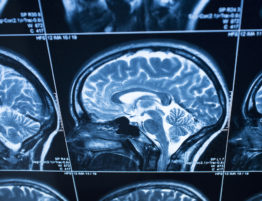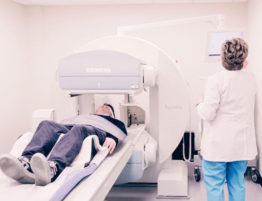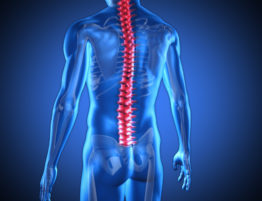According to the Federal Aviation Administration (FAA) air travel is expected to double over the next 20 years. As air traffic increases so does the risk of an aviation accident. Generally, air traffic is considered to be a safe means of transportation, but when accidents do occur they often result in absolute fatalities. Smaller, less serious accidents involving private aircraft are more frequent than people realize because most of these airline incidents are unreported.
Potentially liable (legally responsible) parties vary depending on the cause of the accident. The owner and operator of the aircraft certainly may be liable; manufacturers or maintenance suppliers may be liable in certain circumstances; even the federal government may bear some responsibility in an aircraft accident.
Aviation litigation is complex. There are many different theories of liability under state law, federal law, and international law. There are several potential defendants and places or courts for the trial to take place in, or to choose from. To hold someone responsible for the accident, the plaintiff must prove the defendant failed to meet an industry standard related to operating the aircraft, or related to engineering, or other operational issues. In order to successfully resolve these and other legal issues associated with an aviation accident it is essential that you contact an experienced aviation attorney.
Causes of Plane Crashes
Aviation accident law covers both major air carrier and general aviation accidents. General aviation includes all non-commercial aircraft including small plans, large business jets, charter flights, pleasure crafts, helicopters, and hang gliders. The most common causes of both major carrier and general aviation accidents include:
- Pilot error
- Faulty equipment
- Federal Aviation Administration regulations violations
- Structural or design problems
- Negligence of Flight Service Station employees
- Negligence of Federal Air Traffic Controllers
- Negligence in a third party’s selection of a carrier
The FAA and NTSB
Two federal agencies regulate air travel and investigate every aviation accident (both commercial and general) in the United States: The National Transportation Safety Board (NTSB) and the Federal Aviation Administration (FAA). The FAA sets safety standards for pilot conduct, flight operations, and aircraft manufacturers and enforces FAA regulations through civil penalties or criminal penalties. The NTSB is responsible for investigating every civil aircraft accident and recommends safety standards to prevent future accidents.
Personal Injury Claims for Aviation Accidents
While the circumstances of each aviation accident are always different, generally claims for personal injury or death resulting from an aviation accident are controlled by the legal theories of negligence, product liability or some combination of the two. Additionally because air travel is regulated by two federal agencies, federal rules and regulations may impact a personal injury claim or the standards of care owed to the victim of an aviation accident.
Negligence is the legal term for the failure to do or not do that which a reasonable person would, in a similar situation, do to protect others from foreseeable risks. Pilots, airline maintenance providers and major airlines are among those subject to negligence claims when an aviation accident occurs. Product liability refers to the legal responsibility placed on manufacturers and sellers of defective products. If it can be proved that a defective product somehow contributed to the aviation-related accident, then product liability may allow recovery against the manufacturer or seller of the defective product.
Liability – Owner or Operator
Aircraft owners and operators are held to a duty of care with high standards. If carelessness or recklessness can be proven, then the owner will be held liable for the damages suffered by injured parties, including passengers, people on the ground, and even the pilot. Even if the owner of the aircraft was not operating the aircraft when the accident occurred, the owner may still be held liable under a legal theory called vicarious liability. It is similar to how owner of automobiles are responsible for the actions of the driver of the automobile they own.
Common Carriers. Commercial airlines fall under the legal classification of a common carrier because they hold themselves out to the public as willing to carry all passengers who buy a ticket. Common air carriers are held to different, usually more stringent, standards than are private carriers. The FAA is the principle federal agency responsible for regulating air carriers by imposing uniform standards and operating procedures and monitoring the carrier’s internal standards. An understanding of the complex rules and regulations is necessary for successfully litigating against a common carrier commercial airline.
Liability – Manufacturer. The manufacturer of an aircraft can be held liable if the victim of an accident can prove that a defect in the product (the aircraft) or a component part caused his or her injuries. This is referred to as strict liability. It is important to remember that liability laws differ from state to state. To learn more about strict liability in aviation cases, link on the article “Strict Liability in Aviation Accidents.”
Both the Owner/Operator and the Manufacturer – Comparative Fault. In many cases, both the pilot and the manufacturer are held liable for an aircraft accident. This is called comparative fault. The jury must determine the percentage of liability attributable to each of the defendants. For example, a pilot may be 35 percent at fault for losing control of an aircraft, but the manufacturer may be 65 percent at fault for defective landing gear. Only a few jurisdictions bar recovery from a manufacturer if the pilot’s negligence contributed to the crash. Most states use comparative fault and distribute the blame between the two parties.
Liability of the United States. A primary duty of the federal government is to control all air traffic. The FAA through the Air Traffic Control System (ATC) is responsible for this enormous function. If an aircraft accident involves a collision, a key question is whether or not the ATC did its job correctly and will be joined as a defendant in litigation.
Damages
The typical categories of recoverable damages include: past and future medical expenses, lost wages, lost earning capacity, past and future pain and suffering, emotional distress, loss of consortium (available to married couples only), and punitive damages. Each jurisdiction will differ as to what damages may be recovered and what proof is required for each category. Many states also impose “caps” on certain categories of damages, thereby limiting a potential recovery. An experienced aviation attorney can help you choose the best jurisdiction and present your damages properly to ensure that you are fairly compensated for your injuries.
Conclusion
Aviation litigation is complex and involves an analysis of state, federal, and potentially international law. There are numerous issues that will affect the outcome of aircraft litigation: the parties that may be named as defendants, questions of venue, aviation engineering, industry standards and federal government rules and regulations. If you have been injured or a family member has been killed in an aircraft accident, you should contact an attorney who is experienced in this complex legal area in order to protect your rights.
Call Our Aviation Accident Attorneys for a Free Consultation
If you were injured in a plane crash, or a loved one was killed in an aviation accident, you need a law firm that has experience in litigation aviation accident claims. From Long Beach, CA law offices, our experienced aviation injury and wrongful death trial lawyers can help you get the compensation you deserve. Contact our lawyers today for a free, no obligation legal consultation.
- Who can be held responsible to the injured parties in an air crash?
- Can the owner/operator be held criminally liable?
- What is the Statute of Repose?
- What is the FAA?
- What is the NTSB?
- What is GARA?
- What are the most common causes of aircraft accidents?
- Do the same laws apply to commercial aircraft and private aircraft?





